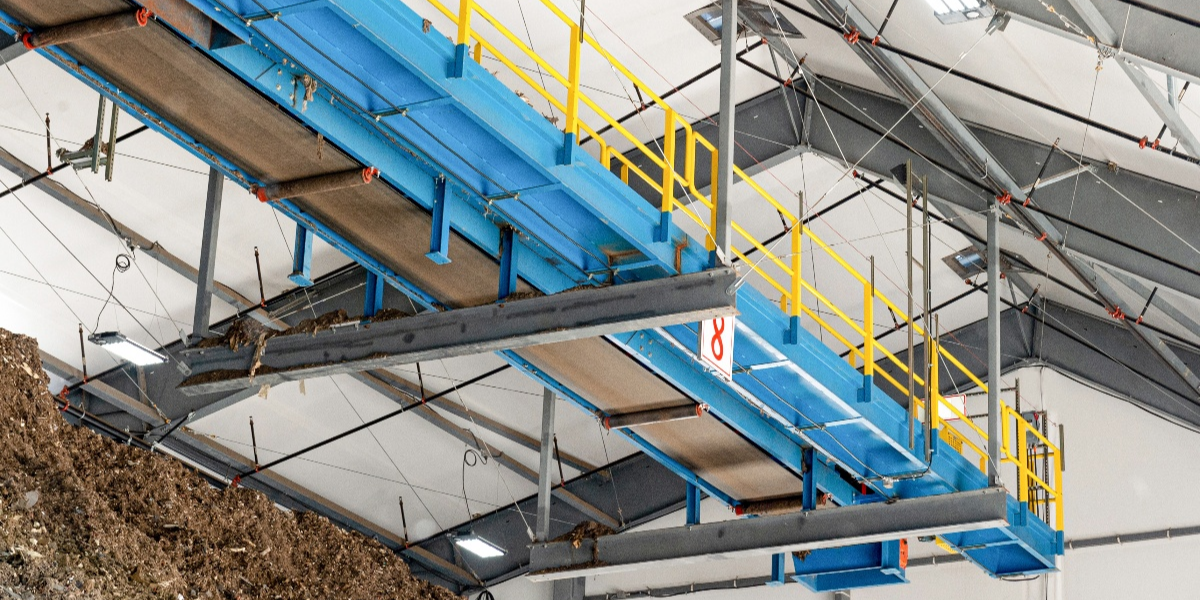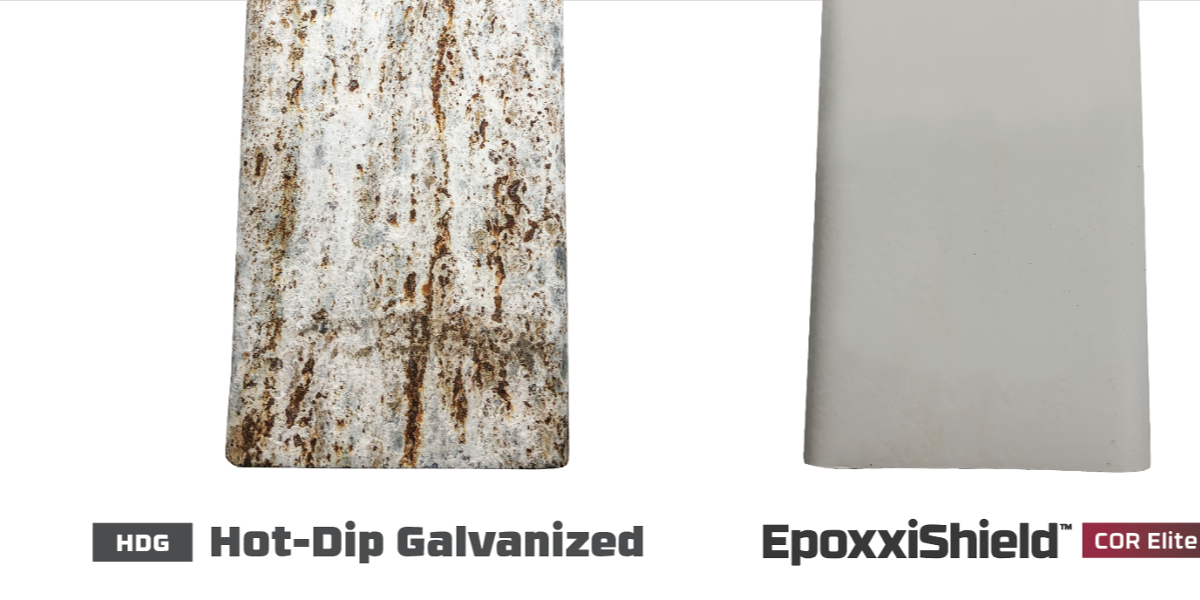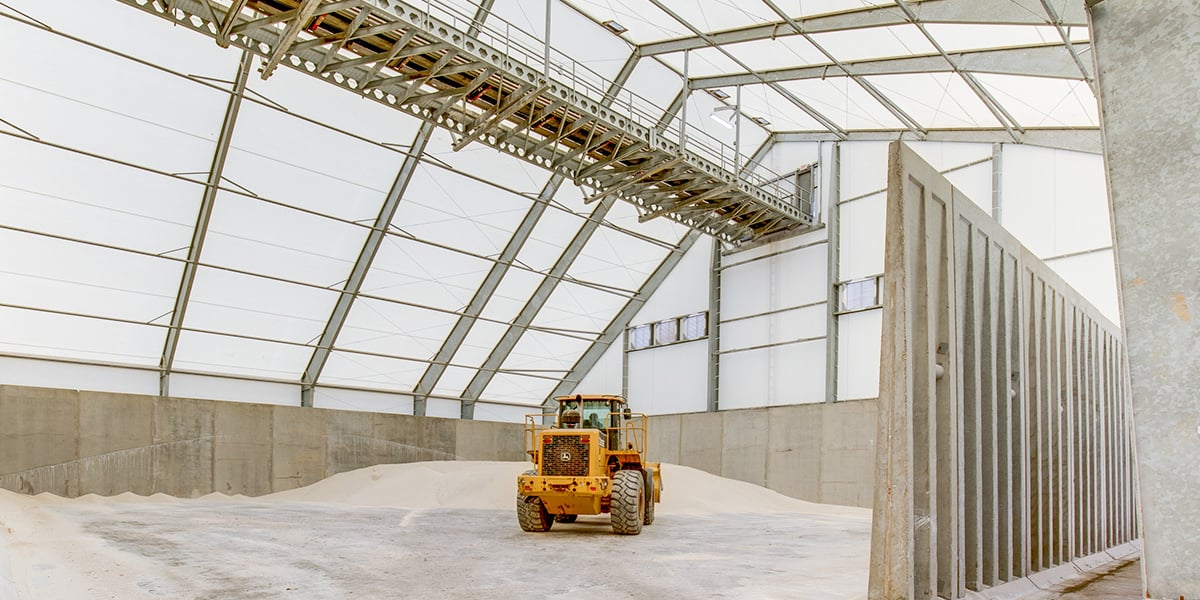5 Advantages of Fabric Buildings for Waste and Recycling Facilities

Tension fabric structures can be used as waste transfer stations, recycling sorting facilities, and storage buildings. Fabric buildings are versatile enough to be used as any type of waste management facility.
There are five main reasons to choose a tension fabric structure in your waste management facility:
- Corrosion-resistant
- Engineered strong
- Versatile ventilation
- Naturally well lit
- Relocatable
Corrosion-resistant: Because fabric is inherently inert to corrosion, tension fabric structures can store and sort any corrosive material. Hazardous materials, highly corrosive materials, and even Mother Nature are no match for non-corrosive fabric.
The fabric is inert to corrosion, but what about the frame? An older method of corrosion protection is hot-dip galvanizing (HDG) or inline galvanizing. Across the industry, this was common practice and is still used today.
However, our waste recycling buildings offer added corrosion protection over HDG. EpoxxiShield™ is an epoxy coating applied to the structure, creating a barrier of corrosion protection. Legacy tested two pieces of steel; one with the HDG and one with EpoxxiShield™.

Through testing, we discovered the corrosion went deeper into the HDG-protected steel, whereas the steel with EpoxxiShield™ outperformed with no visible damage. EpoxxiShield™ will keep your building frames better protected and easier to repair. You can read up on HDG vs. epoxy coating more in another blog post here.
Corrosion resistance is an important advantage of this wastewater treatment building.
Engineered strong: At Legacy, we pride ourselves on our engineering, what we call “engineering certainty.” That means our designs abide by engineering practices recognized across the industry. Consequently, most engineers can pick up our plans and drawings and instantly understand them.
We will ensure your structure abides by all the local building codes, including wind speeds, snow loads, and seismic codes. We will also work closely with your architect to ensure the building meets your needs precisely.
In Addition, our rigid steel frames are strong enough to hang cranes, catwalks, and conveyors. An engineered tension fabric structure is best suited for this type of addition because the frame will be designed to safely support the addition's weight. A lean-to can easily and cost-effectively add office space to your waste management facility.
Versatile ventilation: Legacy fabric buildings are unique in their building designs because ours have eaves, unlike most other fabric buildings. With eaves, you get soffits. With our soffits, you can add vents that draw air into the building. The combination of roof vents and soffits creates natural airflow as warm air rises, flows out the roof vents, and draws more air through the soffits.
Passive ventilation means you may not need mechanical ventilation, saving you money upfront and over the lifespan of your structure.
“We are really happy with the natural ventilation,” said James Kesler, head of cargo and development for Ontario International Airport in California. “We had a system designed for forced ventilation, which would have been very expensive, not only to put in but to operate. We went with the system you designed. I was in the buildings on a pretty hot day. They are cooler now than the buildings the clients are currently in, so they are very happy, too, with the passive ventilation system.” Passive ventilation is also very helpful to assist with mitigating condensation build-up within the building.
Naturally well-lit: Fabric cladding allows natural light to filter into the building right through the walls and ceiling. Using natural light has several advantages in fabric buildings over trying to brighten a dark building with artificial lighting.
- Natural Light Advantages:
- Save Energy
- More Pleasant Environment
- More Natural Feel
- Better for the Environment

Relocatable: Fabric structures are designed to be permanent but can easily be relocated if needed. The entire fabric waste management facility can easily be taken down, shipped, and reconstructed.
Fabric is designed to withstand the forces of nature. It easily withstands the forces of relocation. Detensioning, rolling, porting, and reattaching the fabric do not impact the cladding.
Need a customized fabric building for waste, recycling or wastewater treatment? Contact us today.
Subscribe to our Blog
Recent Posts
- 5 Factors Every Project Owner Should Consider Before Approving Building Materials
- The 20-Year View: How Material Choices Impact Long-Term Operational Costs
- Climate Resilience in Commercial Construction: Why Traditional Methods May Not Be Enough
- Speed and Quality: The Role of Hybrid Building Materials
- Beyond the Bleachers: Designing Visually Striking Sports Facilities

